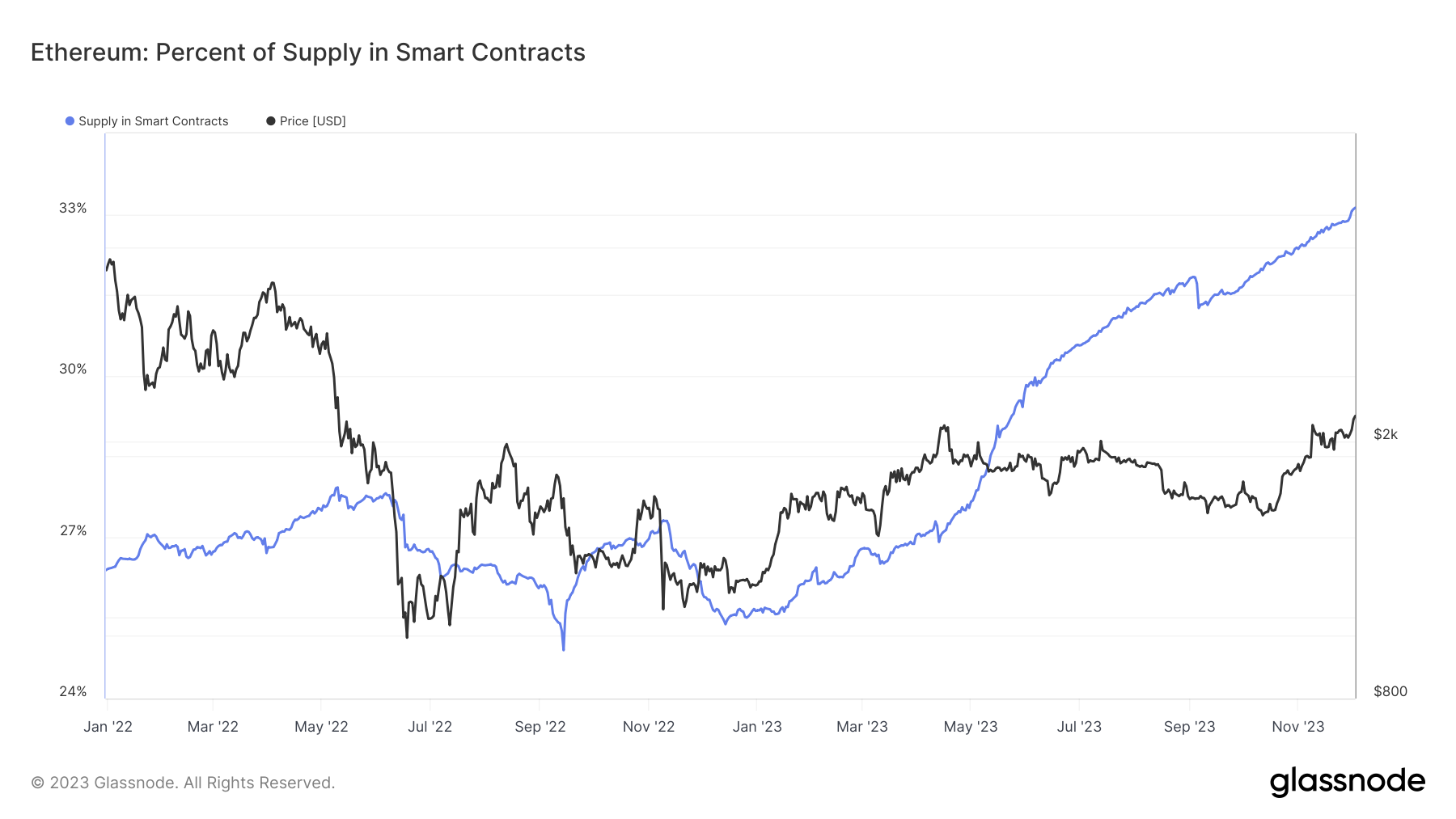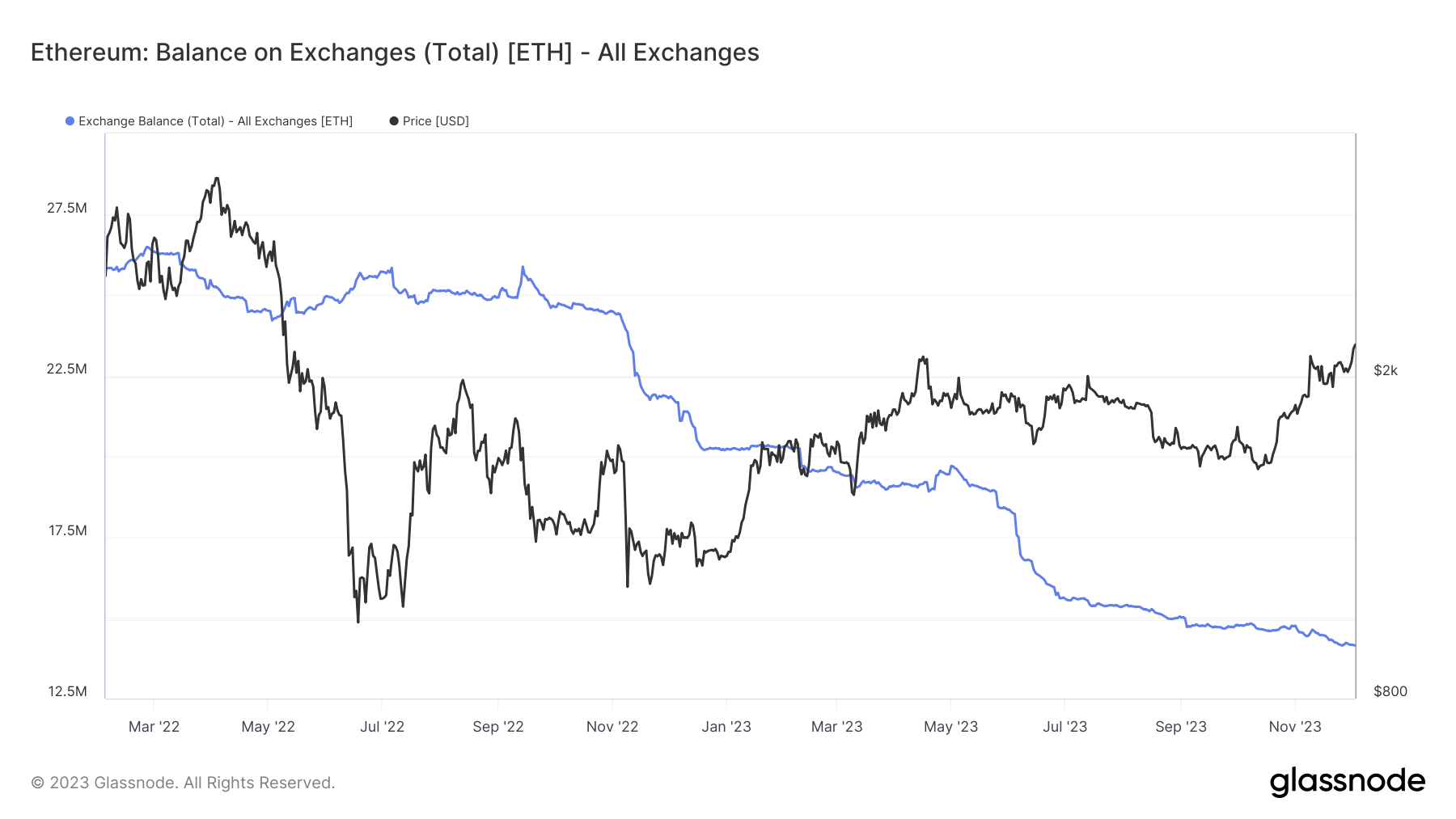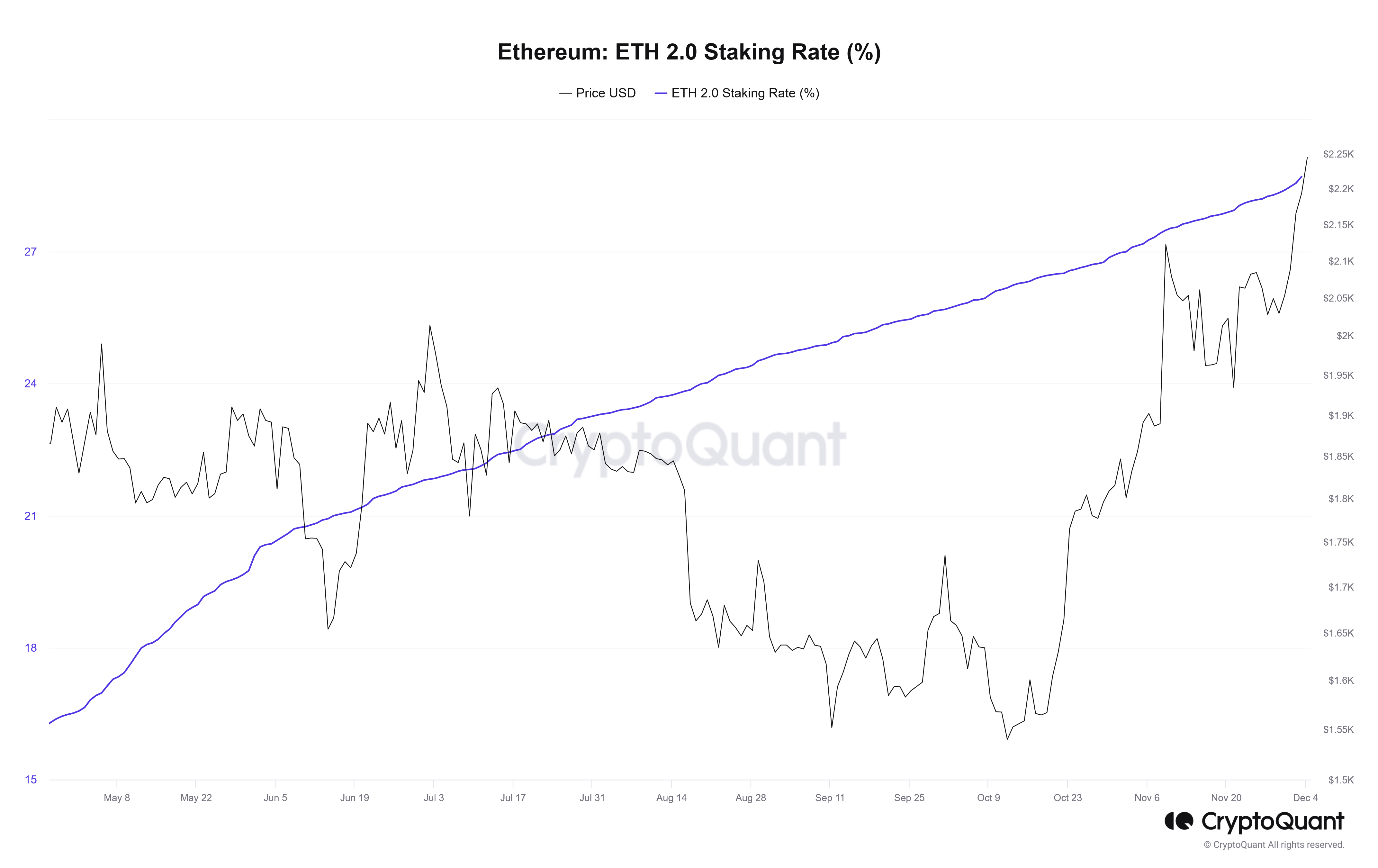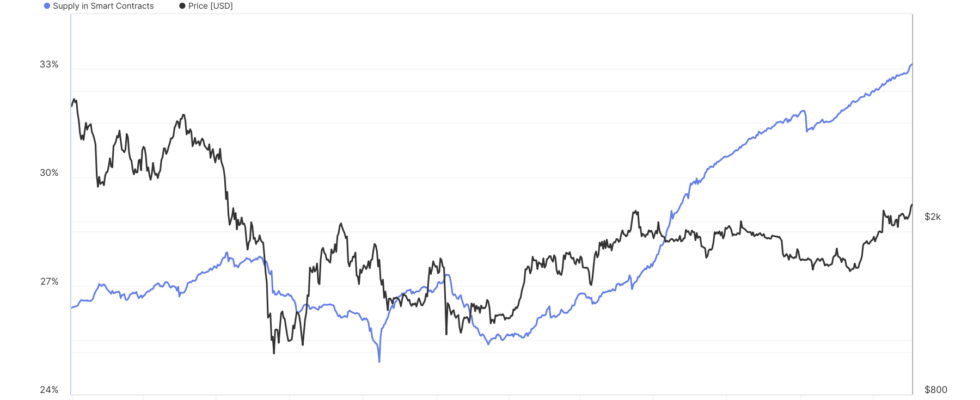According to the latest on-chain data from Glassnode Over 33 percent of all available Ethereum is now tied to smart contracts – an all-time high that marks a milestone for the network. This historic moment testifies to the ever-growing belief in the strength and utility of the Ethereum blockchain, which acts as the decentralized backbone of an ever-larger ecosystem.

The amount of Ethereum locked in smart contracts reflects the active use of the network, particularly in staking and the DeFi sector.
Bitcoin, Ether, XRP: Crypto trading made in Germany
More and more investors are withdrawing their Ethereum from exchanges
A main reason for this development is that, similar to Bitcoin, more and more investors are withdrawing their ETH from centralized crypto exchanges to use it in the Ethereum ecosystem, especially in staking. The following graphics from Glassnode and CryptoQuant impressively illustrate this shift in liquidity.


The percentage of total Ethereum in circulation on centralized crypto exchanges has fallen from over 25 million Ether since the merge on September 15, 2022 to less than 14 million at press time.
At the same time, an impressive increase in the staking rate can be seen, which has increased from 11.61 percent to around 30 percent, as shown in the graph CryptoQuant illustrated.


The more ETH locked in smart contracts, the lower the amount of ETH available on the market as it is used in staking, DeFi and Co. This in turn essentially means that the supply of ETH available for sale will decrease.
Read too


Bullish prospects for Ethereum: shortages and deflation as price drivers
According to the classic laws of supply and demand, a decreasing availability of a good – while demand remains the same or increases – usually leads to an increase in price.
In a dynamic bull market, Ethereum’s deflationary properties could exacerbate these effects. With the EIP-1559 upgrade, the ETH network burns some of the transaction fees, further reducing the Ethereum supply. When network activity is high, typical of bull markets, this shortage of ETH supply becomes more severe. This mixture of supply reduction and increased burn mechanism acts like fuel being poured onto the fire in a bull market. The current developments are likely to have a mutually reinforcing effect, which could benefit the ETH price in the future.
These factors collectively reinforce the bullish outlook for Ethereum. Ethereum’s increasing amount in smart contracts, which reduces liquidity, coupled with its deflationary properties, which further reduces supply, suggests that Ethereum could be in a strong position for 2024.
Disclaimer: All content presented on the website is for informational purposes only and does not constitute buying or selling recommendations.
This might also interest you
